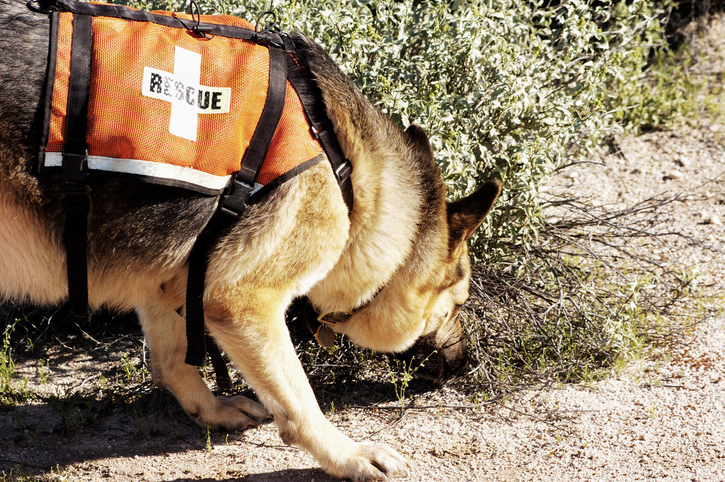
Not long ago, we reprised a post from our archives having to do with HRDs, or Human Remains Detection Dogs (sometimes called cadaver dogs, though the preferred term is Human Remains Detection Dogs).
You can read that post below:
In this post, we are piggy backing off the aforementioned article because an anecdote recently shared with us is too humorous not to share. Our thanks to Kimberly B. for connecting us to Kimberly K. who actually trains Human Remains Detection Dogs, and it is her story we share below. A few editor notes: We haven’t touched Kimberly’s story other than to link some of the acronyms to the organizations behind them, or edit for clarification. Also, note that the story took place during the Covid pandemic.
Ready?
“A woman from SoCal joined the SAR (Search and Rescue) Professionals’ lister wanting to donate her placenta (she had recently had a home birth). Joseph Smarkusky took a copy of her text (she had been trying to donate to CARDA (California Rescue Dog Association, but they weren’t responding to her) so he sent it to me.
“I tried to find her post on the lister, and couldn’t, so I sent her an open/public message.
[She responded] and “said she was in SoCal, and would be willing to drive it to San Diego, Temecula, Riverside, etc. She was completely open to driving it to anywhere within a few hours, or so.
“I told her I was located in Oceanside. Guess what? She lived in Oceanside. I said was on the corner of Leon and Arthur (which by the way, Leon and Arthur don’t connect) as a means of safety, and she said was also in Oceanside, back side of Camp Pendleton, and maybe we could meet at Melba Bishop Park. Turns out, she lived DIRECTLY A BLOCK BEHIND OUR HOUSE.
“So, we make arrangements for her to come over on Sunday, but she got hung up and didn’t make it. On Monday, we make new arrangements.
“Chris (Ed note: partner? husband?) was outside pouring river rock, and I let him know that a placenta is coming.
“A small black car pulls up out in front of our house, and a woman gets out holding an insulated bag, She looks very confused. She goes from one house to another, and then across from ours. I ask, ‘Hey! Is that the placenta?’
“’Uh, no…What exactly did you order??! I’m with DoorDash!”
“She finally figures out which house she’s supposed to be at, they get their food, and we’re all a little confused. But then another little black car pulls up.
“It’s the placenta lady who has a new baby, and we don’t want to get too close to each other (social distancing and all that), so I tell her about the DoorDash lady, she laughs, I laugh, and then she chucks the placenta out the passenger window at me, and we go on our separate ways.
“PS. When she and I were talking on the phone earlier, she had asked, ‘Oh, oh! Are you the lady on the corner of Arthur with the white SUV that says search and rescue and pulls the cool little trailer?!? And when I said yes, she said, ‘OH! OH!, I almost came to your door and said, ‘I have a placenta, do you want it for your search dog?’ But then I thought that might be kind of weird…
“And Chris looks at me (weirdly and in pain) and said… ‘Not at this house.’”
This story probably resonates with anyone who has ever talked about dog reproduction with other fanciers at a restaurant using all the technical terms, only to be given dirty looks from other patrons or the server.
We had a chance to ask Kimberly if there is a “one-stop-shop,” so to speak, where anyone interested in this kind of work can go to learn more, and sadly, there isn’t, largely because laws and restrictions about being in possession of human remains even for the purpose of training an HRD vary from state to state. Kimberly says the best place to start for anyone interested is with their local sheriff, Fish and Game Department, or Search and Rescue for their state (give this link a look)
We can’t vouch for the school at this link, but the first few paragraphs are interesting in terms of understanding of the process of human decomposition and how it impacts HRD training. Kimberly also recommends reading “Stiff: The Curious Lives of Human Cadavers” by
Though searching for human remains is not in everyone’s wheelhouse, few would argue the value of bringing closure to bereaved families, and justice to perpetrators with the evidence often found after a search. Hat tip to everyone who devotes part or all of their lives to training and working with Human Remains Detection Dogs.
Image: Credit:photosbyjim/iStock photo
